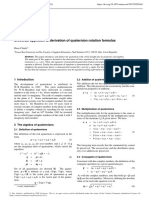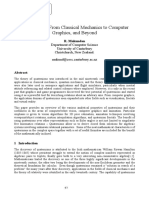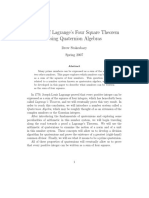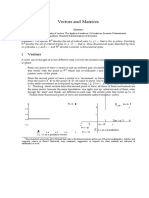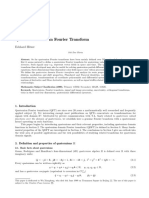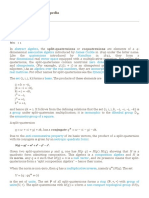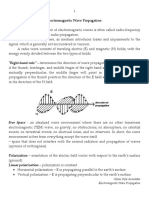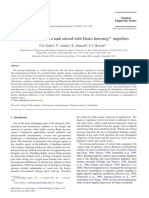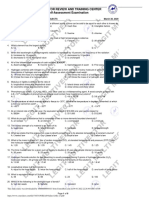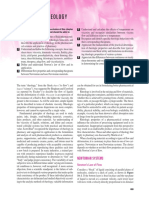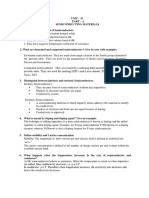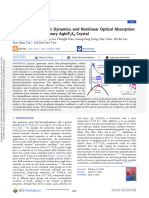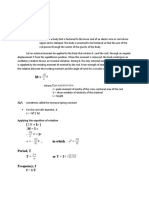0% found this document useful (0 votes)
22 views6 pagesLecture 5
The lecture on quaternions covers their definition as a set of numbers represented in the form a+bi+cj+dk, with operations including addition and multiplication that are associative and distributive. It explains the properties of quaternions, including conjugation, norm, and the concept of unit quaternions, which are used to represent rotations in three-dimensional space. The document also discusses the action of unit quaternions on vector quaternions and their geometric interpretations, including the Euler-Rodrigues-Hamilton theorem related to rotations.
Uploaded by
SUBHRADEEP BANDYOPADHYAYCopyright
© © All Rights Reserved
We take content rights seriously. If you suspect this is your content, claim it here.
Available Formats
Download as PDF, TXT or read online on Scribd
0% found this document useful (0 votes)
22 views6 pagesLecture 5
The lecture on quaternions covers their definition as a set of numbers represented in the form a+bi+cj+dk, with operations including addition and multiplication that are associative and distributive. It explains the properties of quaternions, including conjugation, norm, and the concept of unit quaternions, which are used to represent rotations in three-dimensional space. The document also discusses the action of unit quaternions on vector quaternions and their geometric interpretations, including the Euler-Rodrigues-Hamilton theorem related to rotations.
Uploaded by
SUBHRADEEP BANDYOPADHYAYCopyright
© © All Rights Reserved
We take content rights seriously. If you suspect this is your content, claim it here.
Available Formats
Download as PDF, TXT or read online on Scribd
/ 6










